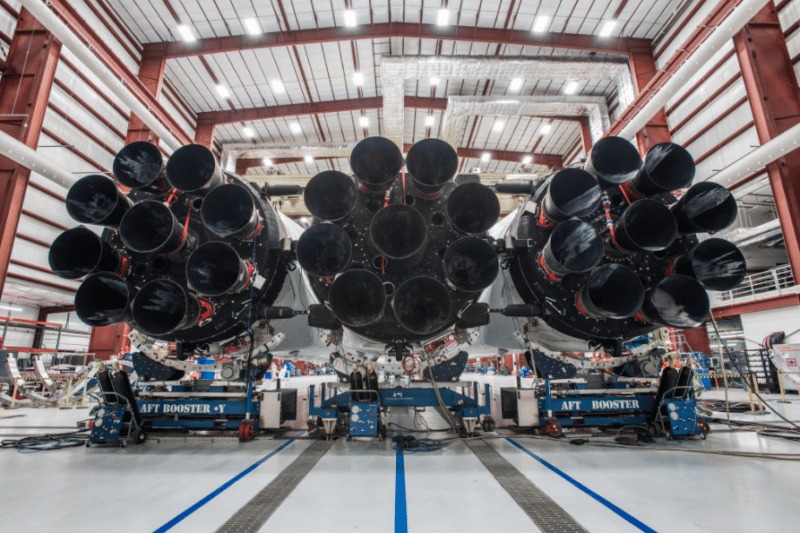Latest News

Falcon Heavy’s three first stage booster cores. Photo: SpaceX.
As SpaceX sends Arabsat‘s massive 14,000-pound Lockheed Martin-built Arabsat 6A communications satellite to orbit on its massive Falcon Heavy rocket, we reflect on the remarkable 15-year journey this “new” heavy-lift launcher took from concept to its first commercial satellite launch.
SpaceX conceived the concept for the super-heavy, three core booster-stage version of its Falcon 9 back in 2005 under the project name Falcon 9 Heavy. The California-based launch company would spend the next six years perfecting the original Falcon 9 rocket, while quietly developing its heavier version. SpaceX let the secret out of the bag in April 2011, unveiling the Falcon Heavy design at a Washington D.C. news conference and setting its initial test flight date in 2013 — a goal that SpaceX CEO Elon Musk would later admit was a bit too ambitious.
“It actually ended up being way harder to do Falcon Heavy than we thought,” said Musk during an appearance at the 2017 ISS R&D Conference. “At first it sounds real easy; you just stick two first stages on as strap-on boosters. How hard can that be? But then everything changes… Really way, way more difficult than we originally thought. We were pretty naive about that.”
Anomalies with the original Falcon 9 launch vehicles would push Falcon Heavy’s maiden voyage back five years. The rocket would also undergo a series of design changes. In 2015, SpaceX announced a number of changes to the Falcon Heavy rocket. Its Merlin 1D engine would be modified with a fuel mix and performance upgrade that would also be implemented in its new Falcon 9 v1.1 model.
On Feb. 6, 2018, SpaceX would capture global headlines with the big rocket’s flashy debut mission, which sent Musk’s Tesla Roadster and a dummy driver, “Starman” on a course for Mars.
In addition to being SpaceX’s first Falcon Heavy satellite launch, the Arabsat 6A mission comes with other unique qualities. It will require the rocket’s main booster to make a difficult landing at sea — on a ship positioned hundreds of miles offshore in the Atlantic Ocean. Falcon Heavy’s two side boosters will return to Cape Canaveral Air Force Station for simultaneous, upright landings. The Air Force even issued warnings that the event could cause significant sonic booms.
If that weren’t enough, the Falcon Heavy rocket will place Arabsat 6A in a unique orbit high over the equator — a remarkable achievement in itself. Despite all this, SpaceX’s Falcon Heavy is still advertised as a comparatively low-cost option to other rockets similar in size. It comes with a reported $90 million price tag.
SpaceX’s next Falcon Heavy mission is scheduled for June. The U.S. Air Force‘s Space Test Program Flight 2 (STP-2) mission will carry as many as 25 small satellites, including: FormoSat-7 A through F, DSX, Prox-1, LightSail 2, GPIM, DSAC, ISAT and ELaNa 15 CubeSats.
Stay connected and get ahead with the leading source of industry intel!
Subscribe Now